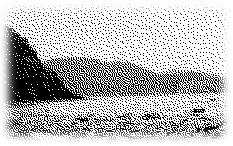The Land
 The whole northeastern part of the big island of Luzon, plus some small islands on the Balintang Channel, was once upon a time a single political unit known as "La Provincia de Cagayan." Protected on its eastern side by the Sierra Madre, on the west by the Cordillera, on the south by the Caraballo Range, and on the north by a chain of sentinel islets called the Babuyanes, this is where our forefathers chose to settle when they came from beyond these shores either on land-bridges or in frail birays which other people prefer to call binidays. Watershed by numerous makilas and pinakanawans which empty into the great Bannag as it flows into the China Sea, the land may not drip with the milk and honey of a land of promise, but it has more that its fair share of nature's cornucopia. On its mountains there is timber that can rival the Cedars of Lebanon; in its rivers teems a variety of fish like the lurung, the mori and the fuligad. The soil is inexhaustibly fertile and the sub-soil conceals a veritable trove of minerals which include the black gold, the green gold, and the kind with the genuine glitter. In its forests and tanaps are flora and fauna not seen elsewhere, not even in zoological and botanical garden. All in a climate which swings from the heat of the dawarawa to the cold spell of the amian, and under a weather in which floods and droughts regularly alternate, and typhoons are as inevitable as death and taxes, minus the deadlines, moratoria and amnesties that usually come with the latter.
The whole northeastern part of the big island of Luzon, plus some small islands on the Balintang Channel, was once upon a time a single political unit known as "La Provincia de Cagayan." Protected on its eastern side by the Sierra Madre, on the west by the Cordillera, on the south by the Caraballo Range, and on the north by a chain of sentinel islets called the Babuyanes, this is where our forefathers chose to settle when they came from beyond these shores either on land-bridges or in frail birays which other people prefer to call binidays. Watershed by numerous makilas and pinakanawans which empty into the great Bannag as it flows into the China Sea, the land may not drip with the milk and honey of a land of promise, but it has more that its fair share of nature's cornucopia. On its mountains there is timber that can rival the Cedars of Lebanon; in its rivers teems a variety of fish like the lurung, the mori and the fuligad. The soil is inexhaustibly fertile and the sub-soil conceals a veritable trove of minerals which include the black gold, the green gold, and the kind with the genuine glitter. In its forests and tanaps are flora and fauna not seen elsewhere, not even in zoological and botanical garden. All in a climate which swings from the heat of the dawarawa to the cold spell of the amian, and under a weather in which floods and droughts regularly alternate, and typhoons are as inevitable as death and taxes, minus the deadlines, moratoria and amnesties that usually come with the latter.
Of this piece of real estate, handsome and covetable despite its climate and weather, Cagayan is no longer the sole owner. The daughter-provinces of Nueva Vizcaya, Isabela and Quirino have claimed and received their rightful parcels, and of the once vast valley province, only 900,267 hectares make up the land area of the Cagayan of today. And we still have to make allowance for the possible adverse outcome of border disputes with neighbors, and the probable erosion of our coastline as it shows resentment over the shame of its denudation. But big or small, this land is our land, and we love every single square inch of it!
from Vignettes About Cagayan and the Cagayanos
by Msgr. Domingo Mallo-Peņaflor





 The whole northeastern part of the big island of Luzon, plus some small islands on the Balintang Channel, was once upon a time a single political unit known as "La Provincia de Cagayan." Protected on its eastern side by the Sierra Madre, on the west by the Cordillera, on the south by the Caraballo Range, and on the north by a chain of sentinel islets called the Babuyanes, this is where our forefathers chose to settle when they came from beyond these shores either on land-bridges or in frail birays which other people prefer to call binidays. Watershed by numerous makilas and pinakanawans which empty into the great Bannag as it flows into the China Sea, the land may not drip with the milk and honey of a land of promise, but it has more that its fair share of nature's cornucopia. On its mountains there is timber that can rival the Cedars of Lebanon; in its rivers teems a variety of fish like the lurung, the mori and the fuligad. The soil is inexhaustibly fertile and the sub-soil conceals a veritable trove of minerals which include the black gold, the green gold, and the kind with the genuine glitter. In its forests and tanaps are flora and fauna not seen elsewhere, not even in zoological and botanical garden. All in a climate which swings from the heat of the dawarawa to the cold spell of the amian, and under a weather in which floods and droughts regularly alternate, and typhoons are as inevitable as death and taxes, minus the deadlines, moratoria and amnesties that usually come with the latter.
The whole northeastern part of the big island of Luzon, plus some small islands on the Balintang Channel, was once upon a time a single political unit known as "La Provincia de Cagayan." Protected on its eastern side by the Sierra Madre, on the west by the Cordillera, on the south by the Caraballo Range, and on the north by a chain of sentinel islets called the Babuyanes, this is where our forefathers chose to settle when they came from beyond these shores either on land-bridges or in frail birays which other people prefer to call binidays. Watershed by numerous makilas and pinakanawans which empty into the great Bannag as it flows into the China Sea, the land may not drip with the milk and honey of a land of promise, but it has more that its fair share of nature's cornucopia. On its mountains there is timber that can rival the Cedars of Lebanon; in its rivers teems a variety of fish like the lurung, the mori and the fuligad. The soil is inexhaustibly fertile and the sub-soil conceals a veritable trove of minerals which include the black gold, the green gold, and the kind with the genuine glitter. In its forests and tanaps are flora and fauna not seen elsewhere, not even in zoological and botanical garden. All in a climate which swings from the heat of the dawarawa to the cold spell of the amian, and under a weather in which floods and droughts regularly alternate, and typhoons are as inevitable as death and taxes, minus the deadlines, moratoria and amnesties that usually come with the latter.